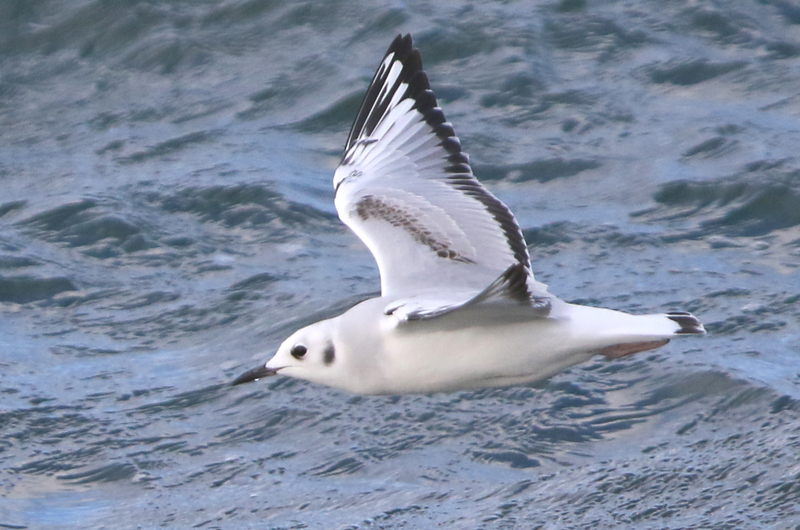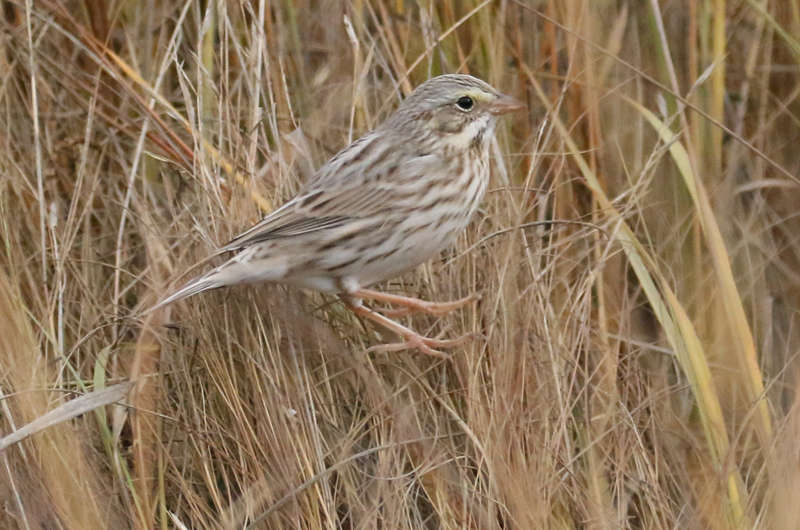It is really starting to feel a bit more like winter. While temperatures are generally colder and more seasonal, it is the arrival of our winter resident waterfowl that confirms the seasonal shift. Ducks and geese are arriving in large numbers, and many of them will stay through the winter.
Most notable is Scott Stephens’ report of about 1,000 red-throated loons off Squibnocket Beach on Nov. 11. Such large numbers — easier to see from a boat than from shore — confirm that this is the peak of their southward migration. Many of these loons will likely head further south for the winter, as that is more red-throated loons than we usually see in the winter.
We are likely to find migrating seabirds anywhere off the South shore. They may be near shore, or they may be out near the horizon. Identifying them can be problematic especially at great distances when they appear as mere dots. Their silhouettes and flight pattern can help with the identification. Seaducks (primarily eiders and scoters) are chunky and typically fly in lines or small flocks close to the water’s surface. Loons are more slender and their long neck stretches out in front of them. Gulls will be white overall and are more likely to either soar or wheel around, readily changing their distances above the water. And gannets are larger, cross-shaped birds that will fold their wings together to plunge dive into the water to catch their food. A spotting scope helps when trying to identify these offshore birds.
Numerous observers from many ponds across the Island have reported increased numbers of bufflehead and American wigeon. Other diving ducks like scaup and goldeneye will show up soon.
Geese are also on the move. The large numbers of winter geese that graze on the grasses of Ocean Park have returned. On Nov. 11, I counted 180 Canada geese and 75 brant. The numbers of these geese will increase even more as the season progresses, and many of them will stay through the winter.
Bird Sightings
Susan Whiting hosted the most unusual sighting of the week at her feeder on Nov. 18. A purple finch was mixed in with a flock of house finches, becoming the first sighting of this species in a while. Purple finches used to be a relatively widespread breeding species on the Vineyard, now they are irregular fall migrants and winter visitors. She also had a brown thrasher and two eastern bluebirds at her feeder.
A second unusual sighting of the week was by Jeff Bernier, who found the season’s first Ipswich sparrow at Little Beach on Nov. 15. This subspecies is a very pale, almost gray rather than brown, version of the more common Savannah sparrow. They may overwinter here amongst the sparse vegetation of our coastal dunes.
Two Bonaparte’s gulls were spotted by Warren Woessner on Nov. 18 from the Steamship Authority as he was returning to the Vineyard. Also on Nov. 18, Margaret Curtin found a flock of tree swallows flying over one of the Seven Gates Farm fields near North Road.
Allan Keith spotted his first pied-billed grebe of the season on Squibnocket Pond on Nov. 17. Harlequin ducks have also arrived and can be found swimming around amongst the offshore boulders. He also found brown thrashers, catbirds, four tree swallows, a Baltimore oriole, and several white-throated sparrows. He notes that so far the latter species seem to be less common than in past years.
Fish crows have become more common in recent weeks. In addition to the approximately 300 winter residents that have been living between downtown Vineyard Haven and the drawbridge, about 50 to 75 fish crows are regularly found near Farm Pond and the western end of Harthaven Beach. Newer sightings have come from Pilot Hill Farm on Nov. 14, when Scott Stephens counted 266 commuter fish crows flying overhead on their commute from Falmouth to a nocturnal roost near Lambert’s Cove Road. And Penny and Don Hinkle report that in the past week about a hundred fish crows have arrived and are now in residence near the East Chop Beach Club; this flock has displaced their few resident American crows. This may be the same flock that Wendy Culbert found near the Oak Bluffs library on Nov. 18.
Finally, Penny Uhlendorf reports large numbers of robins and eastern bluebirds at Felix Neck on Nov. 12, foraging the abundant seeds, berries, or insects on the sanctuary. She also reports bluebirds at Pilot Hill Farm, and these sightings are a welcome change from their scarcity this summer.
Plenty of migrants can still be found and our winter residents are becoming increasingly abundant; please keep us up to date by reporting your sightings to birds@mvgazette.com.
Robert Culbert is an ecological consultant living in Vineyard Haven.








Comments
Comment policy »